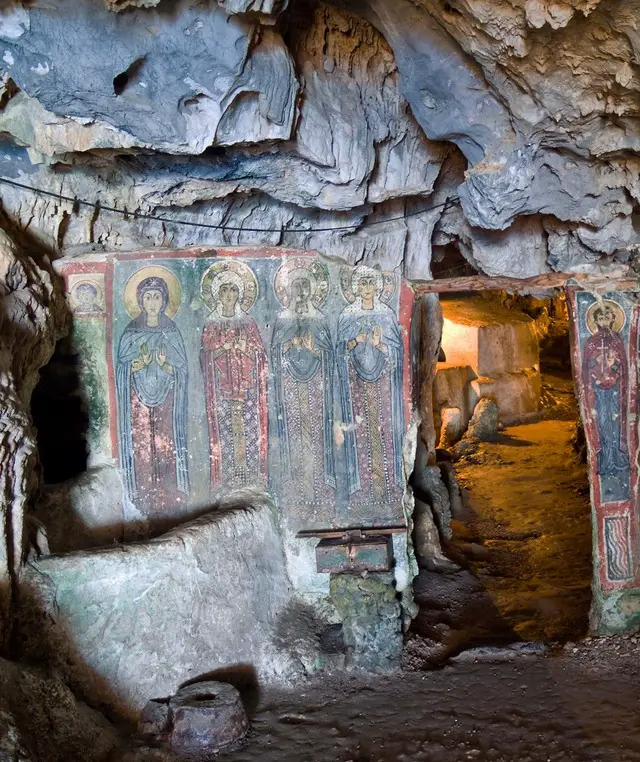
The Greek island of Kythira cradles a hidden treasure that interlaces history, mythology, and sacred devotion—the Cave of Agia Sophia of Mylopotamos. This cave, a haven of cultural richness and spiritual significance, houses an enchanting church dedicated to Saint Sofia deep within. Sunlight filters through its open roof, casting illumination upon holy icons and ancient frescoes, breathing life into the legends that have become intertwined with its existence.
Introduction
Situated near the villages of Kapsali and Mylopotamos, the Cave of Agia Sophia serves as a sanctuary where myths and realities come together. Its name, Agia Sophia, resonates with the wisdom of ages, a fitting title for a site that seems to cradle the echoes of centuries past. It invites pilgrims, history enthusiasts, and those seeking profound experiences to venture into its cool embrace and delve into the stories that have molded its essence.
Upon entering the cave’s depths, one witnesses a testament to devotion and artistry—a church with an open roof devoted to Saint Sofia. Here, legend and faith intertwine, as the story of Saint Sofia, steeped in symbolism and virtue, finds her sanctuary within these walls. It is believed that her mortal remains were discovered here, prompting the residents of Mylopotamos village to construct a chapel in 1875 CE in tribute to her memory.
Read more: Ajanta Caves Abandoned & Found 1500 Years Later by an Englishman
Inside the Cave of Agia Sophia
Treasures adorn the church within the cave, infusing its sacred ambiance with vitality. Its walls display holy icons and exquisite frescoes, some dating back to the 13th Century CE. Among these prized artworks, a fresco featuring Agia Sofia (wisdom) and her three daughters—Love, Faith, and Hope—takes center stage. As visitors step through the entrance, they encounter this evocative imagery, which beckons them to contemplate the enduring virtues.
In the cave’s recesses, the passage of time reveals remnants that whisper tales of the past. Amid the hallowed atmosphere, echoes of the early Christian era resound. These fragments provide a glimpse into the practices and beliefs of that era, offering evidence of the Christian cults that once thrived deep within the cave. This historical layer intricately weaves the cave into the broader tapestry of Kythira’s spiritual and cultural heritage.
The Cave of Agia Sophia serves as a mirror reflecting the enduring power of faith and devotion. The act of pilgrimage, wherein individuals journey to sacred sites in reverence, stands as a tangible testament to the inherent connection between humans and the divine. The cave’s role as a pilgrimage destination echoes the age-old tradition of seeking solace, insight, and connection in places touched by the sacred.
Exploring throughout the cave
As visitors travel through the cave, they embark on a journey through light and time. The church’s open roof allows sunlight to pour in, casting an ethereal glow upon the relics and artwork. This interplay of light and shadow, symbolizing the inherent duality of human existence, resonates with the cyclical nature of history, faith, and spirituality.
The Cave of Agia Sophia of Mylopotamos doesn’t merely represent a site of historical and religious significance; it stands as a living legacy that beckons individuals to interact with the past and contemplate the enduring virtues. The legends of saints, the craftsmanship of frescoes, and the pervading sense of reverence come together to craft an experience that transcends physical boundaries.
In the heart of the Cave of Agia Sophia of Mylopotamos, Greece’s rich tapestry of history, mythology, and spirituality converges. As pilgrims and explorers step into its embrace, they venture into a realm where ancient legends and human devotion find common ground. The echoes of wisdom, the hues of ancient frescoes, and the quiet reverence filling the air convey a message that transcends time—a message of the enduring connection between the divine and the earthly, the human and the sacred.




